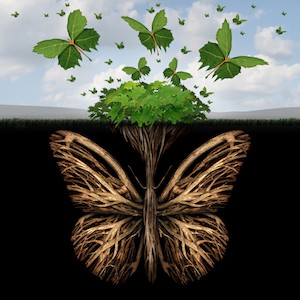
Dr. Neufeld says that we need to offer our children two invitations. The first is the unconditional invitation to exist in our presence and the second is the invitation to become fully who they are. This same sentiment is sometimes represented imagistically: we are helping them grow both roots and wings.
Some parents find it natural to extend the invitation for deep, dependent relationship: “Your problems are my problems,” “there is nothing you bring here that is too much for me,” and “let me help you find a way,” capture the essence of this invitation. Others naturally invite a child to become who they are: “Let’s see what you create!”, “Oh, that is an interesting way to look at that – tell me more,” and “I can see why you don’t like that” are phrases that welcome individuation. For most of us, one of these sets of phrases comes more naturally than the other. It is part of our growth as parents to find both invitations inside ourselves so that we can extend them to our children.
As they grow, children shift between these two drives–to attach and to individuate–day-to-day and, sometimes even, moment-to-moment. We can see these polarities most strikingly in our toddlers and our teenagers as both are times in life when integrative functioning capacity–the ability to hold two opposing feelings at the same time–is low. I remember vividly my two-year-old son insisting on dressing himself–slammed drawers and shouts could be heard through the closed door of his room–only to slip and fall on our walk twenty minutes later and want to be carried and sung to.
I am reminded of this toddler time when my other son, now sixteen, excitedly tells me about the gap year he is planning – biking and birding solo across our home state of Oregon – just before I tuck him into bed where he loves hearing the same song I’ve been singing to him at bedtime his whole life. Deep attachment fuels the drive towards individuation and, after some time spent in individuation mode, our kids (be they toddlers, teens or in-between) need to “fuel up” with attachment once again.
As always, being the parent our child needs calls forth the best in us, propelling us forward in our own development. We are called to access our own integrative functioning, our own power to gracefully both welcome dependence and celebrate independence back and forth, again and again, as we support our children in their healthy maturation.
One or both of these needs in our children may stir us up. For some, the preschooler who wants to be carried all day may bring us face-to-face with our frustration.For others it could be the “do it myself!” insistence of the toddler (or teen!) that tries our patience. As always in parenting, when our own feelings get big we need to find outlets for emotional expression (be it journaling, kickboxing or listening to melancholy music). That way, we can provide both the fertile soil that our children need to root in and the celebration and appreciation of their unfurling wings.

Anyone spending time with a young teenager knows that they can be lovely and intriguing one moment and irrational and angry the next. Their emotions are strong and their prefrontal cortex is under major reconstruction, resulting in incredible highs, desperate lows, mature insight, and impulsive reactions – sometimes all in one day.
The early teen years can be incredibly hard to parent through. Somewhere in the eleven- to thirteen-year age range, our previously reasonable children are likely to become completely allergic to direction. They can appear inconsiderate, act rashly, and yes, even throw tantrums.
Even if previously we enjoyed a close relationship with our child, they are now likely to roll their eyes at us and inform us plainly just how wrong we are about any number of things. They appear to have forgotten everything we ever taught them – from manners to bicycle safety. Many adults throw their hands up in exasperation, feeling they have totally failed as parents or teachers. They ask: where has my tender care and instruction over the last twelve years disappeared to?
Actually, the care and instruction have not been for naught. We, as parents and teachers, have simply entered puberty again, this time as the ones responsible for shepherding our teen through this transition! If we thought it was a rough ride the first time, this time is probably going to be pretty bumpy too. Body odour and growth spurts, pubic hair and bras are actually the easy parts compared to the emotional ups and downs we are challenged to patiently navigate and guide our teens through.
What is all of this turmoil and disruption in service of? We understand that physical changes are meant to ready their bodies for reproduction, but what is the purpose of the wild mood swings and refusal to cooperate? Quite simply, Nature is making room for a new tentative individual to emerge into their own personhood.
For the first decade or so, you get to fill your child up with your values, your beliefs, your preferences, ideals, and priorities, and then the emerging young adolescent begins to test out new ideas that are entirely their own. Some of these are sweet and tentative, some are bizarre and odd, and some might actually even be dangerous; all of them are untempered, and black-and-white thinking rules the day. While this critical process of discovering one’s own thoughts and ideas begins, Nature puts up what amounts to psychological walls to hold the outside world at bay. So if you feel like you are talking to a wall, you sort of are. If you feel like they are only thinking of themselves, it’s true. But it is for good reason: Nature has a plan.
When we understand why this is happening, our role becomes more obvious: we must protect our budding young teen from harsh criticism, from shaming, and, often, from themselves. We must let them unfold. And we must have some grace for the awkwardness of the expression, the bizarreness of the idea, or the frustrated explosion when we have to stop them from, for example, jumping their bike over the car.
We do this for them, just as we did when they were toddlers and wanted to “do it myself”! We let them try, we support the effort, and we keep them safe, both physically and emotionally. Although they may be inconsiderate to others (including us), this is the moment when we have to step up as parents and treat them with dignity and care.
For young teens, becoming their own person is exciting, but it is also incredibly scary and vulnerable, and the most important thing we can do as parents is to hold on to our teens. This can be hard because they seem to be actively pushing us away. Nevertheless, we have to find ways to walk beside them. They need us to be in their corner no matter what. We must feed them physically and emotionally. We must provide a strong home base. Most importantly, we must take full responsibility for the relationship.
This may sound like a tall order when your teen just explained to you in great detail where he thinks you should stick your head. Indeed, it is a tall order. Parenting a young teen will grow and stretch us. It requires us to extend grace – freely given unmerited favour with no expectation of reciprocity. For example, we cannot assign intent when an adolescent is being hijacked by extreme emotion. Rather, we might state matter of factly, “This situation isn’t going well, let’s take a break and come back later to watch a show and have a snack together.” This is grace in action.
So the next time your afternoon with your young teen goes completely sideways, imagine them as their three-year-old self and cuddle them up (if they let you), find something to laugh about, be playful, feed them, and trust that your relationship with them will bear fruit down the road. These can be tough years, as our adolescents transition from being children to becoming adults. This is a difficult and scary time for them, filled with huge emotions and new realizations.
We cannot protect them from the peril of the journey, but we can stay by their side, remain loyal and steadfast and hand out the snacks and the kleenex. We can hold on.
Robin, along with fellow Neufeld faculty member Lisa Weiner, is anchoring the upcoming Making Sense of Adolescence course which starts on January 18, 2021. Click HERE for details and to register.

Wash the dishes, wash the dishes;
The Christmas dinner dishes;
Three generations in the kitchen all at once
(Hawksley Workman, 3 Generations)
My mother was the keeper of our family rituals. Fiercely independent and proud of her amazing turkey dinner timed just right, she would never accept help from us, her two adult daughters. She took complete responsibility for the feast from start to finish as a labour of love, even when it might have begun to feel too much. At a certain point, she decided to cook everything the day before, allowing herself a slower pace perhaps, re-warming the meal into deliciousness the next day.
My mother owned Christmas day in our family, and we all knew that any other plans we might have made were best quickly reconsidered. December 25th was her day, and she relished having her children and grandchildren around her.
She started the day by playing Santa, handing out presents with a little red hat on her head. Then on to a breakfast of eggs benedict with lots of laughter and excitement all around. As the day unfolded we enjoyed a slower pace with coffee, chats, and catch-up on the news of our lives, with perhaps a seasonal movie playing in the background.

She would have the table already set with her best dishes. We would gather to enjoy our feast, telling her it was the best one yet, and on to the dishes we would go. Don’t forget to wipe the counter! Do you want to take the extra turkey for sandwiches? Who wants the left-over mashed potatoes??
Laughter, gratitude, and best dishes put away till next time, with three generations in the kitchen all at once. Our holiday rituals were embedded in the comfort and simplicity of the day, the sameness, the consistency, the safety of knowing.
My mother died suddenly in April of this year. Now, we face December 25th just around the corner with a lonely feeling of disorientation … we don’t know anymore. As much as we might long for the comforts of Christmas with our mother, we cannot reproduce the day that she owned so completely. She is no longer there. Yet as I think about the shape the day might take, it strikes me that indeed … we do know.
We will open presents together, deciding who will be our Santa and wear the little red hat going forward. We will have our breakfast of eggs benedict, now made at my house with everyone involved in the preparation. As the morning unfolds, we will enjoy a nice slow day in each other’s company, chatting, catching-up on the news of our lives, with perhaps a seasonal movie playing in the background. It will feel heavy at times as we reminisce and remember. Perhaps a family walk together in the afternoon will be helpful for a bit of lightness and a new tradition.
We will do a potluck. No one could ever replace the gift of being taken care of so completely by our mother, with attention given to every detail of the meal. Yet we can take care of each other by providing our best recipes made lovingly.
And then after the feast, on to the dishes we will go. Did you wash the counter? Don’t forget to take the extra turkey for sandwiches! Who wants the left-over mashed potatoes??
Laughter, gratitude…
Put away the fancy dishes;
Just to take them out next Christmas;
Three generations are only together for so long.
(Hawksley Workman, 3 Generations)
I invite you to watch Canadian artist Hawksley Workman’s performance of ‘3 Generations’ – there is such a wonderful simplicity in his song, exactly what I am trying to capture about rituals as embedded in the day, and across the generations.


With Thanksgiving already over in Canada and the United States, and with Hannukah, Christmas and other celebrations coming in just a few weeks, we are firmly into the holiday season. Like the rest of this year, it promises to be a season unlike any other we have experienced before. During a time of year that is usually filled with long-held traditions, Holiday Season 2020: The Pandemic Edition is bound to present us with challenges and losses. Some of our traditions may need creative altering, while others may stand as they always have. Both ways can offer us that familiar balm we’ve long known and need this year more than ever.
One of my family’s most treasured Hannukah traditions is the annual visit to my sons’ classrooms to serve homemade latkes with applesauce, pass out dreidels, and tell a Hannukah story. This tradition has become a wonderful way for me and my husband to forge warm connections with our sons’ classmates, teachers, and school administrators. (We always make sure to drop off a plate of latkes in the main office.) The unmistakable latke smell wafts through the hallways while we warm the potato pancakes in the school kitchen. Teachers always wander in (nothing like the smell of latkes to draw people near!) with exclamations of “I always know it’s Hannukah when I see you two in the hallways with your platters!” or “My grandmother used to make these,” and “Can I have your recipe?” Of course, no one leaves the kitchen without a latke in hand.
While this will be the first Hannukah in eleven years that we won’t be delivering latkes to school, the warm memories of this beloved ritual stay with us as we consider doing some “drive-by latke drops” to teachers and classmates. We can’t wait to continue the tradition next year, when it will be even more appreciated because of its absence this year.
Neufeld Institute Faculty member Elana Strobinsky, who lives in Israel, will also be missing her usual Hannukah traditions this year. She writes:
This year we’ll be preparing for Hannukah the way we usually do, but for the first time that I can remember, I don’t feel the usual excitement. Rather I have a sense of apprehension because I know that this year will be different. We will still be able to have so many of our beloved traditions, such as lighting the menorah every evening together with our children, singing songs, having family dinners, playing games, making latkes, and frying doughnuts (and my kids will joke, as always, at my attempts to make “healthier doughnuts”). But I’m also filled with sadness because I know that so much will be missing. For instance, we won’t be having our annual family gathering at my parents’ house, with grandparents, aunts, uncles, and cousins. And we’ll have to postpone our usual community events and fun outings with our “friends-like-family.”
During the ins and outs of daily life, holidays provide a time of rest and togetherness. Each holiday has its unique traditions, which provide us and our children with a sense of familiarity, that awaken warm memories and feel like a “homecoming” no matter where we are. But this year, due to Covid-19, some of our traditions will be missing, and some we’ll have to recreate in order to adapt to the very odd times we live in.
There is much to be thankful for and happy about, yet at the same time, there is also so much missing. I know we’ll have a happy holiday. We’ll enjoy the time we spend together with our children, we’ll continue the traditions that we can, under the circumstances, and I also know that we’ll find a way to recreate the traditions that can’t be celebrated, in a way that will still allow us to feel connected to the people we love.
But before all of that, there is sadness to be felt for what will be missing, for the loneliness and suffering of other people around us near and far, and for the uncertainty of when this will all be over. This year will be different but, hopefully, at the other side of our sadness we’ll be able to find rest and joy in both the familiar and the reconfigured traditions and through our connections to the ones we love.
Some beloved holiday traditions, notably those that connect us not in physical space but through the heart, can continue as usual this year. Neufeld Institute facilitator Sara Easterly writes about her family’s favourite Christmas ritual:
The first Christmas tradition I embraced as a new mom came straight from my youth: baking and decorating sugar cookies. What a delight it was to have my mom with me the first time we did this with my one-year-old daughter and her newborn sister. Together we made a giant mess of flour and frosting while listening to Teresa Brewer sing “Christmas Cookies and Holiday Hearts” and cutting dough into shapes of snow-people, stars, and Santa. We had great fun and I basked in the meaningfulness of carrying on this ritual in a multigenerational way.
Over the years, while grieving my mom’s death, I’ve come to learn that the lasting magic of making Christmas cookies came from her leadership rolling out the dough for me, her artistry as she painted her cookies and shared her techniques, her laughter from pure enjoyment of family time, her willingness to embrace mistakes when the snowman’s scarf broke off, and the permission she gave me to roll up my sleeves and get messy. This was her Christmas spirit on display. This was the “holiday hearts” part of the cookie song we sang about.
With my own family, it’s no surprise that baking and decorating Christmas cookies is the pinnacle tradition that has stuck with us. It’s only now, as an adult, that I fully appreciate why. Mirroring my mom’s Christmas spirit is the most important part of this ritual for me, and the one I hope my children remember most when they look back on our Christmas sugar cookie baking.
More than any other time in the recent past, this year has called on us to find our resilience–that place where we can find workarounds, new paths and fresh solutions–and this Covid holiday time is no different. Neufeld Faculty member Tamara Strijack writes about how she is adapting her favourite holiday tradition to this year’s constraints:
New Year’s Eve collaging is a fairly new tradition that began with my own desire to slow down and think about the past year and my hopes for the year ahead.
That particular year I had re-discovered collage and I had compiled the necessary ingredients – old magazines, cardboard, scissors, and glue sticks. I put out the invitation, that if anyone wanted to join me, they were welcome to. No obligation. And so I started cutting.
Soon magazines were strewn on the kitchen table, spilling out to the floor. My two adolescent daughters were in, as were my sister and her five-year-old son, my 17-year-old nephew, and his girlfriend. We chatted, found words for each other, laughed, and ate, and cut and laughed … as we got closer to midnight.
The stage had been set and I was surprised at the engagement (my oldest kept going until 3 am!). What impressed me was how this made room for both an incredible shared experience, while at the same time allowing the opportunity for personal expression and processing. The five-year-old simply collected pictures he liked and glued them together, while the older ones found words and images that tapped into desires and dreams difficult to give voice to in any other way.
And so a New Year’s Eve tradition was born that day – making room for the reflections from the year before and yearnings for the year ahead. This year there is more to process than ever before and our new family tradition will reflect that: we are going to need more supplies (there are a lot of feelings that need to come out in collage this year!), we are going to need the help of Zoom to join our kitchen tables, and we are going to need some kleenex for the tears that are likely to come.
From all of us at the Neufeld Institute, we wish you a feeling-full holiday season and a healthy New Year!

I sit here listening to the lyrics of a song my daughter wrote when she was 15, and it brings me right back:
I’m floating away, seems my mind just won’t stay in my brain.
It’s all just a haze and the ghosts overtake me, no escape … no escape.
I’m going in circles … what happened to “everything’s okay?”
I’m stumbling through it all,
I’ll get there some day.
Circles … stumbling … no escape.
I think back to my own writing and the angst that filled the pages of my journal. Here are some re-discovered excerpts, just to give you a little window:

Help!!
I am being overtaken,
my mind is being invaded …
It has gone far beyond not understanding,
I am in the depths of despair …
Looking for a clearing,
an escape,
a fire exit,
a bathtub plug.
Anything to drain the undesired pandemonium
from my consciousness …
What is it about the uncomfortable space between? No longer a child, and yet yearning for the innocence and simplicity of childhood. Not yet an adult, and yet glimpsing the seeming freedoms of adulthood that are just out of reach. Not there yet. And not able to hold on.
I recall the complete overwhelm as my inner world expanded with new ideas and possibilities, and with it the pain of unrealized dreams (albeit unrealistic ones, but realism and adolescence aren’t on speaking terms yet). And with it, also a surge of hormones and emotions that I didn’t understand or embrace as my own – at least not yet. I felt too big and too much – like I didn’t fit so I had to leave parts out. But what parts should I keep? What parts should I hide? What parts were really me? Where did I belong? And was there anything or anybody I could really trust? So many questions and very few answers.
It was too much. It was all too much.
And so my heart stayed “safely” armoured away for many years in order to avoid feeling anything at all. Years passed, and ironically, I began working with adolescents more armoured than I was. It was partly though this process that my heart began to soften, as I struggled to find my way to their side.
More years passed, and I had children of my own. Eventually, it came time for them to navigate their own adolescent journey. And as much as I desperately want to make it better somehow, there was a wiser part of me (who graces me with her presence less often than I would like) who knew that this was a necessary journey – the angst, the despair, the loss of simplicity and innocence. The temptation to escape, to run away, or to hide is palpable. I felt it; I feel it now just remembering; and I see my children feel it too.
But as strange as it sounds, I wouldn’t wish those feelings away. For I know so much more now than I did then, at least when it comes to understanding that avoidance is NOT the way through to anything, least of all maturity and independence. Don’t get me wrong – I’m not saying that my daughter doesn’t need me. But she needs to go through it herself; that is, I can’t protect her from the disappointments or the heartache – nor would it help if I did. And when I look at her world right now, which is full of angst in itself, with so many things we don’t have control over even as adults, I know she needs me now more than ever.
And so I sit with her, and try to make it as safe as possible:
… to feel the angst and the other vulnerable feelings that make us human;
… to normalize the overwhelm, without being overtaken by it;
… to stumble through it all, feeling the bumps and bruises, without hardening her heart.
And, to find ways to get things out and keep things moving – which for her was and is through poetry and music and art and being alone in nature.
It’s awkward. It’s messy. It’s prickly. And sometimes it’s not pretty at all.
But something beautiful can be born in the process, if we make room for it.
Tamara will be speaking on the topic of Preserving Emotional Health in Adolescence in our upcoming Saturday seminar on November 21, 2020. Click here to register by November 19, 2020.
To see Tamara’s poem captured as it was originally written, dramatic flair and all, click HERE.
For more of Sinead Ocean’s music, you can find her on Spotify or YouTube.
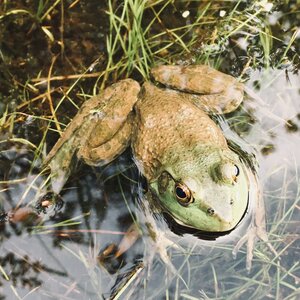
This fall looks a lot different than anyone could have anticipated. Many parents are finding themselves in the position of deciding to keep their children at home and figuring out what that might look like. Many teachers are finding themselves in the position of trying to “teach” in the midst of restrictive protocols and increased anxiety all around.
Regardless of whether you are navigating “teaching” at school or at home, I’d like to suggest a few developmental reminders to keep things in perspective.
But first, a story about frogs and ferns. Sometimes lessons come from unusual places. This one comes from Aunt Ruth …
In my world, this pandemic brought many changes – one of the more welcome ones was having my sister and her two boys move in for awhile. This was a hard transition, not so much for my sister, but her 7-year-old experienced quite a bit of resistance. He found the city streets and the bright lights comforting. I live in the country, where the wandering elk regularly eat the compost and wildflowers grow wherever they please. My nephew found this unsettling at first. And very unknown.

Young William liked order. And knowing what to expect. My house was odd, with cold floors. The yards and fields were unruly and he missed the cars and the traffic (unlike his Aunt Ruth who fled the city years ago and loved walking the forest trail beside her house.) But it wasn’t home. And he didn’t feel at home. That is, not until he met the frogs.
We met Ted first, down by the lake. I was introducing William to my bench, the place I liked to sit and observe – well, more like “take part in” – the world around me. The playful otter, the diving osprey, the shy beaver, the crazy crayfish, the brazen damselflies that rested on my Cowichan sweater. William happened to move in during frog season. We spotted one and I gave it a name – Ted.
William had never thought of being able to name the things around him, while I never questioned it at all. Naming, whether animals, plants or feelings, helps us feel more connected. (Even the giant spider in my bathtub has a name. Somehow calling him Harold makes him seem friendlier and less scary. But back to William.) This simple act opened up a whole new world! It opened his eyes and his heart to the world around him. Somehow I had given him permission to interact with the local plants and critters in a whole new way.
William started visiting the lake more often. He found more frogs and he named them all. One of them, Fred, didn’t jump away but stayed close and held his ground. We weren’t sure if he liked the company or if he perhaps had a few things not quite right with his head. Either way, William felt at home with Fred and Fred with William. His alarm started to come down. (William’s that is, although I suppose Fred’s did too.) He even started to explore the far corners of the field on his own. He started asking questions. He drew maps and plant guides to make sense of his surroundings. Our forest trail became the “avenue of ferns” and the “aisle of skunk cabbage” and sometimes the “way of the slugs”.
There are a few stories in his experiences yet to be told, but the piece that feels important here is that William started to make a connection to the world around him in a way he hadn’t experienced before. That connection provided fertile ground for learning to take place. Through his experience he developed a particular curiosity about ferns. He now knows more about ferns that I do (or would ever want to!) – the types, how they grow, where they grow, whether you can eat them. Nobody taught him all that directly. (Although I did tell him the story about how his mother used to eat ferns when she was little. It explains so much.) He learned because he wanted to know more, and he knew who to go to for answers – in this case his fellow fern-loving older cousin.
He developed a love of frogs and ferns because he connected with the world around him. And because I introduced him to Ted.
The connection to the world around him also brought him closer to his inner world. It took some time, but Fred was an unwitting catalyst for the tears that needed to be shed about all the things he had left behind. Or maybe Fred knows the part he played – it’s hard to tell. But whether Fred was intentional or not, it happened. The guard was let down because William felt safe. It happened when Fred disappeared for awhile, causing great concern. In missing Fred, it made room for him to miss his home and his father and the busy streets he knew so well.
William needed to feel that sadness and the disappointment and the futility of not being able to control his world. We all do actually. It keeps us human. It helps us not only stay connected to our own inner world, but to those around us.
Now, as young William prepares to move to a new home with more busy streets, I hope he takes with him his passion for frogs and ferns – that he keeps connected with the world around him and with the emotions that get stirred up within him (even the uncomfortable ones).
This is where the true learning and true growth happens … where you least expect it.
Warmly … Aunt Ruth
And so back to those reminders …
For a child to be RECEPTIVE to learning, this works best in the play or exploration mode – that is, where they have room to explore and be curious without the pressure of an outcome or performance.
For a child to be in the EXPLORATION mode, this works best when they feel safe – that is, where they do not feel alarmed or anxious (about the learning or the circumstances around it).
For a child to feel SAFE, it works best when they feel at home – that is, when they feel connected and cared for by the adults (and frogs) in their world (parents, teachers, and other supporting cast), and when they feel connected to their own feelings through experiences that foster connection to their inner world.
With these conditions in place, there is no telling what kind of fruit may grow.
Tamara will join Gordon Neufeld in presenting The Saturday Seminar on Home Education on October 24, 2020. For more information CLICK HERE.
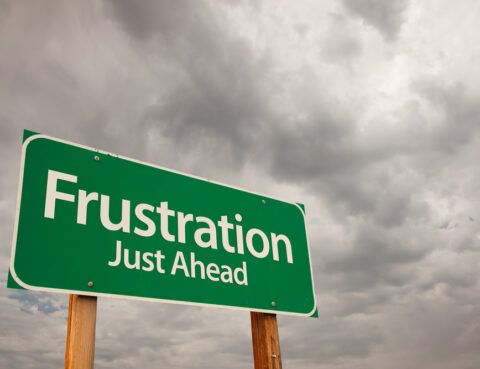
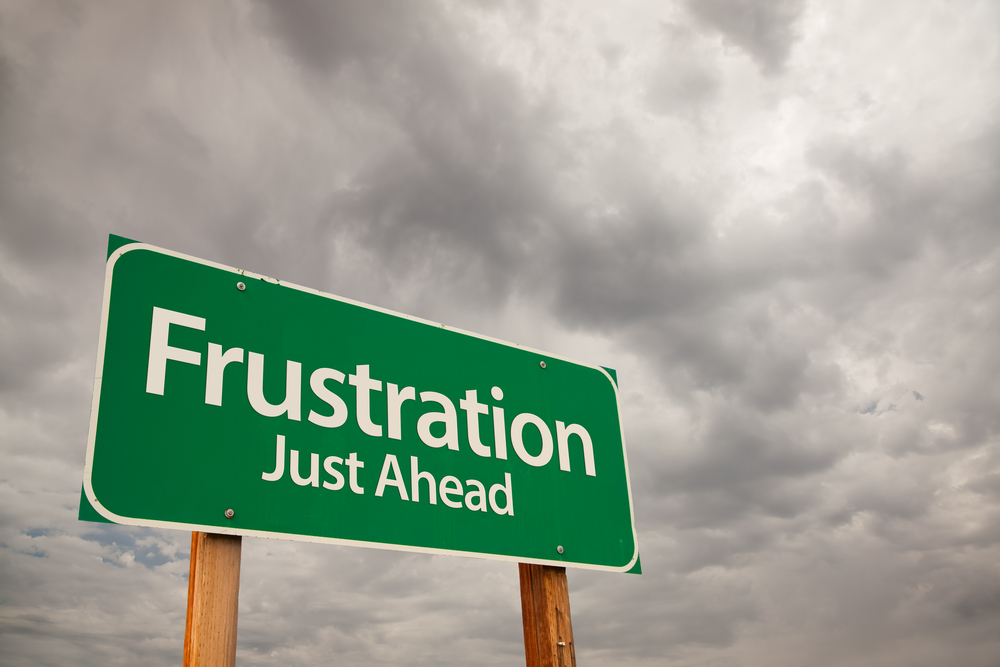
If one were trying to create a recipe for frustration, these past few months would be the winning combination. Frustration is one of our primary mammalian emotions and it arises when things are not going the way we want them to.
Not being able to move about the world as we are used to doing? Frustrating! Having to do schoolwork all day at home? Frustrating! Not being able to see grandparents, teachers or cousins? Frustrating! Having to supervise schoolwork all day at home while trying simultaneously to work and/or do all the other things that need to get done? Also frustrating!
One of the foundational truths about emotion is that it seeks expression. If we understand this truth, we can make the time and space for expression. If we don’t, our emotions will seek expression anyway and will leak (or explode) out of us without our consent. With the emotion of frustration, we all know what this eruption can look like: sharp words, tantrums (kid and adult versions), sarcasm, hitting (or impulses to hit), door slamming, self-harm and so on.
These days, as frustrating circumstances abound, we would be wise as parents to make sure that we build in regular times for emotion (both ours and our children’s) to come out in ways that we are generally okay with; that we make time and space for what Dr. Gordon Neufeld calls “emotional playgrounds.” Emotional playgrounds are activities or practices that provide unrushed time and ample space for emotions to move. They are, in essence, emotional “outhouses”: designated places where discharges of emotion, which are sometimes unsavory and unappealing, can happen. The outhouse comparison is especially apt because we all know what type of mess awaits us when we don’t make regular trips to the outhouse . . .
When we are thinking about the expression of frustration there are three broad categories of activities where it can “come out to play”: destructive activities, constructive activities and melancholy-inducing activities.
It is probably obvious to all of us how destructive play “vents” frustration. Frustration can build up in our children (or ourselves) like a volcano that is ready to erupt; these types of activities provide places for the explosive energy to safely go.
Some examples of destructive activities are:
- Making a “This Sucks” box (like an old-fashioned complaint box) in the kitchen where family members can deposit paper slips filled with frustration whenever it needs to come out (if “sucks” isn’t part of your approved vocabulary, remember that oftentimes the edgier the play is, the more aligned it is with getting foul frustration out safely)
- Slamming a punching bag
- Hammering glass bottles wrapped up in a towel
- Chopping wood
- Drawing a picture of someone or something and ripping it up
- Creating a “shit book” (a journal for rants and swear words and other generally unacceptable things)
Constructive play can also be a great way to move frustration. This makes sense if we remember that frustration comes when things aren’t going the way we want. Frustration comes from wanting change, so being able to make something go just the way we want is a great release for the frustration that builds up around all the things that we can’t change.
Some examples of constructive activities are:
- Making something just right, be it through woodworking, ceramics, baking or cooking
- Planting and tending to a vegetable garden
- Organizing a drawer, desk or bookshelf
Finally, and perhaps a bit confoundingly, activities that call forth a bit of sadness also help frustration to move. One of the greatest ways that frustration is released is through its conversion to sadness. In simplistic terms: can we get mad to turn to sad? This is the ultimate answer to all the things we can’t change: to become changed ourselves by those very things, to adapt to things that are not going the way we wish they were. This is the root of true resilience, and this is why melancholy-inducing activities are so good at draining built-up frustration.
Some examples of melancholy-inducing activities are:
- Watching sad movies
- Reading poetry
- Making music or listening to music
- Reflective journaling
As you can imagine, each of these lists could go on and on—there are as many emotional playgrounds as there are people, and what works for someone may fall flat for someone else. It is important to find what works for each of your children, to find what works for you. As Dr. Neufeld says, all children have their “bent.” Are they a hitter? A yeller? A builder? A painter? We just need to figure out what that bent is.
During this time when so much is not going as we would like it to—this time of many daily frustrations—it should be integral to our newly reinvented schedules to have time for each member of the family to play. We all need places—at least a few times each week—where our frustration can move. We are often so afraid that if we give frustration an inch it will take a mile.
In truth, just the opposite is true. If we give our frustration some open space to flow, it will be much less likely to burst out of us when we are least expecting it.
******
Stay tuned for more on play and the primal emotions in the coming months…
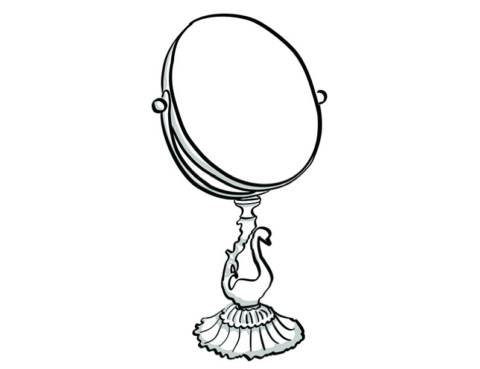
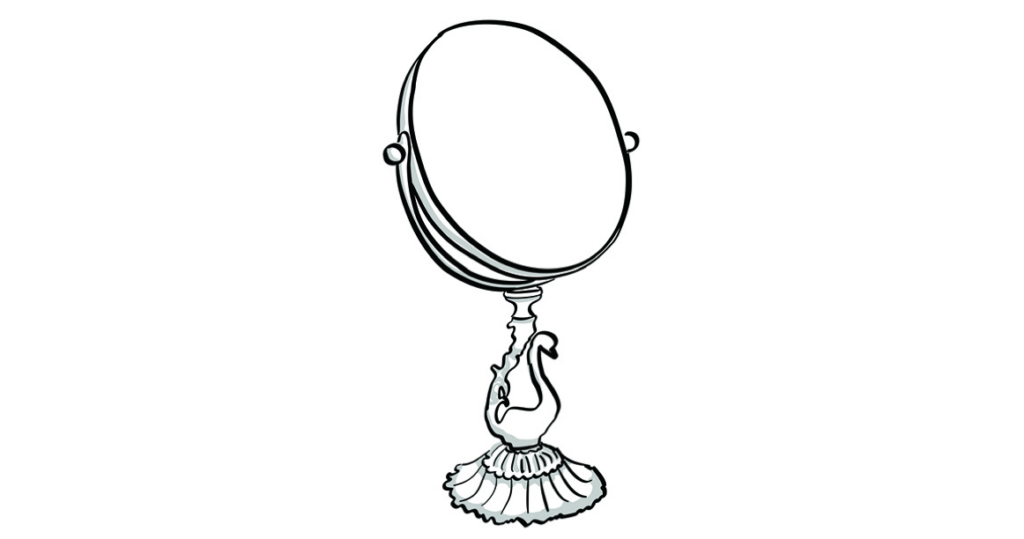
We are being called upon these days – for good reason – to confront racism wherever we should find it. It is being uncovered in some of the very institutions we depend upon to preserve order and justice in our society. The sense of anger and betrayal runs deep.
There is also a growing realization that racism is systemic in today’s society – this despite holding equality as a supreme value. I would argue that racism is even more deeply rooted than this; it is an unfortunate offspring of our developmental beginnings.
An essential aspect of development is for the child to divide the world into us and them. Every one of us has been guilty of believing that those who are like us matter more than those who are not like us. Our world of attachment starts off rather polarized. I remember well my own childhood in the context of a religious ethnic group, where ‘them’ referred to ‘the english’. This term was used for anyone outside of ‘our people’, regardless of race, nationality, language, or origin. This construct made it conveniently evident as to where evil came from, where the threat lie, who were the enemy. Polarized attitudes come rather naturally to a preschooler mentality, whatever the age, with or without the help of society.
The construct of ‘we’ is absolutely essential to healthy development. It is rather unfortunate that the construct of ‘them’ comes with the territory, together with all the judgements that can ensue. If attachment polarization is part of everyone’s beginnings, then how are we to overcome this? Many put their hope in education. Others in confrontation. As a developmentalist, I am convinced that the best answer lies where the problem originated in the first place. The maturational process needs a chance to finish its job. Division into ‘us and them’ was only meant to be a step towards integration or the coming together of opposing parts. Only true maturation can help us to transcend the preschooler within.
If conditions are conducive, children should become rather conflicted about these simplistic polarizations, filled with on-the-other hand thoughts and ideas. This natural birthplace of equality should have its spontaneous beginnings around ages 5-7, if everything is unfolding as it should. Unfortunately, maturation is not inevitable. We don’t all grow up and out of racism, or the myriad of other manifestations of attachment polarization for that matter. As Robert Bly argued in Sibling Society, immaturity has become commonplace in today’s society, even among our so-called leaders.
If inner conflict is truly the motor of moral development, why are mixed feelings lacking in so many adults these days? Part of the problem is that we can’t feel conflicted about something we do not even admit to. In my experience, it has been rather rare for anyone to admit being a racist, or a misogynist, or even a bully for that matter, despite it being rather obvious to those around them. When inner conflict is missing, one’s interpretations seem self-evident, similar to any normal preschooler in this regard. Theirs is a world of black and white thinking, good guys and bad guys, winners and losers, people who matter and people who don’t. Before we can take up a relationship with these polarized sentiments within ourselves and feel the inner conflict that would enable us to grow out of them, we have to admit them to ourselves in the first place. There is no other route to becoming fully converted to the equality of mattering, from inside out that is, and to the very core of our being.
But emotional maturation takes time and conducive conditions to grow out of it. So what do we do with our children in the meantime? Furthermore, what do we do with immature adults who are in places of social responsibility, especially the ones who are meant to take care of us? And, finally, how do we compensate for our own immaturity and inevitable regression in times of exhaustion, stress and alarm?
The answer is in social scripts. In order to compensate for emotional immaturity, we need to translate into simple scripts our values of equality and justice. Like actors in a play, if maturity is called for, it must be scripted in simple and doable ways. We cannot wait for actors to grow up, or to understand what maturity looks and feels like, from inside out. As parents, we need to be scripting our children. Teachers need to be scripting their students. Leaders of our institutions should be doing this with those under their responsibility or command. And we need to make these scripts for ourselves for when we lose the integrative functioning that makes us fully human and humane. Simply demanding maturity where it is lacking is an exercise in futility. Our challenge is to create and provide the scripts that enable us to act mature when there may not be sufficient emotional maturity to support it spontaneously. So we have some homework to do.
Racism will not be addressed, at least not through social scripting, if we do not realize we have a problem in the first place. So we must confront racism where we see it, not forgetting to have a look at ourselves in the process.
The deepest and most lasting solution to racism is true maturation. We at the Neufeld Institute will continue with our mission of helping parents and teachers provide children with conditions that are conducive to growing into their conflicting feelings and then out of their polarized attitudes. We hope we can make a difference.


My 17-year-old son Jacksen bounded out of his room this morning, fresh out of bed, greeting us without a hello or good morning but instead straight-up yelling, “That’s it! I’m not staying in this house today! I’m going out! And I don’t care what anybody says right now!”
Did I say, “No you are not! You can’t go out right now because we are all expected to self-isolate as part of protecting our community, and it’s our social responsibility and furthermore, so on and so forth, and blah-blah-blah, and so on and so forth…. [insert lecture]”?
No, I didn’t say any of that, even though my rapidly firing stress response pushed me in that direction. I didn’t match his alarm and frustration with my own. Now is the time to give room for his emotions, not mine. I didn’t push my will up against his. We all know where that kind of foolish challenge can lead, turning bad to worse.
Instead, my husband and I let him vent. We made him some eggs and toast for breakfast while he stomped around a bit. And the storm passed just as quickly as it had arrived.
Right now, the cooped-up adolescent is trying to navigate the emotional impact of these strange days, with panic and fear rapidly circulating all around. Adolescents are absorbing intense stress during an already heightened time of developmental turbulence. For many, being cut off from school, friendships, and regular activities will fester worry about the “what ifs” that are further fuelled by negative social media exposure. We simply have to accept that we are sometimes going to see this tension play out in their behavior, in their tone, in their language, in their decisions, in their demands, in their challenges….
It helps to know that, in the bigger picture, this manner of expression is important and serves a purpose. We need to give it some
R-O-O-M. This is “coping in action.” This is “alarm in motion.” We do not want these emotions to get stuck inside of our adolescent with no outlet for release. What is happening in their world is terribly alarming and not easy to talk about. We are going to see them “behave how they feel” at times.
Will there be things to address in what they do, what they say, or how they say it? Perhaps … but consider that sometimes the best way to address something as a parent is to take it in context and stride, allowing it to simply be released by the side of the road along the journey. We can allow ourselves to keep the relationship foremost in mind, and be creative about the rest.
What can I do here? I wondered after his outburst. What might help?
When all was more settled and his stomach was full, I decided to invite him to share what he thought was important, to give this article a 17-year-old’s perspective.
I think there is a lot of fear right now for young people … fear about loss and worry about death. This is true when I think of other people in my family, like my grandparents. Maybe some people have lost a family member already. People my age feel super-anxious right now about this virus. It feels like it is the end of the world, and some young people actually believe it is the end. I also think that many of us feel like we are missing out on something: on adolescent experiences, on time with friends, on experiences at school. This is really true if you are graduating. We feel like we are missing something we can’t ever get back.
Jacksen Friske
I think we have to remember this is temporary, and we can use social media to connect still with people and our friends. Maybe it is a good time to think about a new hobby. I think we need to try and get out of our rooms more and spend time with family or we will end up feeling more depressed about things …
While I listen to him describe some of his thoughts, acting as a scribe to type his words, I can’t help but marvel at his maturity level, even in the face of those moments of seeming immaturity.
As I finish the article, my son seems more at rest, more settled. That is, until next time when the alarm and frustration bubble up to the surface again! And it will….
Then it will be back to the same formula of relationship, R-O-O-M, and rest, applied liberally as needed, with as much patience as I can muster for my cooped-up adolescent.
I wish you all the patience you can muster, too.

